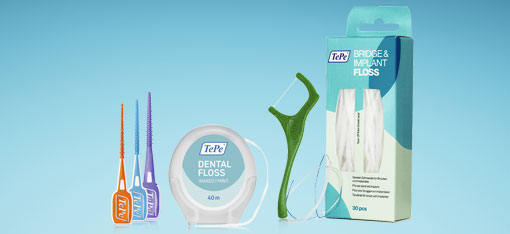Guide to Preventing Gum Disease and Cavities
Healthy teeth throughout life also affects your overall health! Research supports a connection between oral and general health, so it is important to keep your mouth healthy. Your smile not only brings you confidence, but your teeth allow you to chew and speak properly. It is important to have proper oral care and visit your dental professional to prevent gum disease and cavities.
Healthy Teeth

A healthy mouth has gums that are light pink in color and fit firmly around each tooth. There is no bleeding when you brush or clean between your teeth.
Gum Disease

What is gum disease? Gingivitis is inflammation of the gums. Inflamed gums (gingivitis) are red and swollen. If left untreated, gingivitis may progress to periodontitis, or loss of bone that supports the teeth. This will put you at a greater risk for tooth loss.
What is the cause, symptoms, and risk indicators of gum disease? If bacteria are not disrupted a sticky film called plaque will begin to form. Plaque is especially prevalent between the teeth and along the gumline. When plaque accumulates in these areas it causes gum inflammation leading to gum disease.
Common symptoms
- Bleeding gums
- Swollen gums
- Tender gums
- Bad breath
- Redness
Common risk indicators
- Poor oral hygiene
- Genetics
- Smoking
- Misaligned or crowded teeth
- Difficult areas to clean in the mouth. For example, bridges, orthodontic braces, or implants.
- Stress
- Fluctuating hormones
- Medications causing gum growth or dry mouth
- Poor nutrition
How do you prevent gum disease? With proper oral care and by being aware of the causes and symptoms, you can decrease your chances of developing gum disease. Be gentle but thorough with your cleaning routine, brushing twice a day and cleaning between your teeth daily. You may need to incorporate an additional tool to effectively clean hard-to-reach areas.
Read More: Gingivitis and Periodontitis Informative Leaflet
Cavities

What is a cavity? Cavities are a leading chronic condition affecting children in the United States (CDC, 2019) and common among adults as well. Cavities form when the bacteria in the mouth eat the available sugars and produce acid, which breaks down the outer layer, the enamel, of the tooth. Cavities often develop between the teeth and in the presence of deep grooves.
What are some common causes of cavities? Cavities often form where it is difficult to clean properly, for example, between teeth or around a prosthesis. Also, frequent snacking or continual consumption of sugar increases the risk for developing a cavity. Limiting the number of times your teeth are exposed to sugar throughout the day, for instance only mealtime, allows your mouth the time it needs to return to a healthy state. Continually snacking on sugary treats throughout the day allows the bacteria in your mouth a frequent food source, and acid is repeatedly produced causing the enamel to break down to form a cavity.
How do you prevent cavities? Proper oral care and nutrition is important. Brush your teeth twice a day and clean between teeth once a day. Avoid snacking, and drink water when thirsty.
Read More: Simple Tips Leaflet
Prevention with TePe Oral Hygiene Tools
Regular dental checkups in combination with your own home care are crucial in maintaining oral health. TePe hopes these tips will help you achieve your oral health goals for 2021! Start by using TePe products to get one step closer to a healthy mouth!











Leave a comment